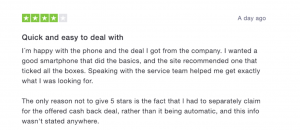
GraphicMama-team / Pixabay
You’ve achieved success in your business because you provide a service that satisfies your clients’ needs. At your core, you know this means your organization has the potential to grow, but your small team is already pushing maximum capacity. How can you take your company to the next level without sleeping even less? The key that has eluded you up to now is systemization.
The systemization of business operations allows for working smarter instead of harder. Systems are scalable, giving you the potential to increase productivity as needed. They ensure consistency in the workflow and allow for predictability of specific outcomes.
Design your business systems so your organization can run on autopilot.
You’ll need to determine what parts of your operations maximize profit for your company. Start by outlining the things your business does well but could still use improvement. Pick two or three top priorities. These will have the most potential for an increased return on investment (ROI) when you find the best way to systemize them.
From there, look to see who among your employees outperforms the others and evaluate the tasks that they do well. Carefully observe their performance so you can glimpse the system they’ve implemented for success in their role. If you detail exactly how these employees perform their tasks, your team can replicate their system later. `
Documentation is the start of systematizing your business’ routine operations and producing measurable results for years to come. Make all of your processes replicable by documenting them in detail. The way one successful employee performs their role’s tasks can model success for the team and, by extension, the whole organization.
You can’t have a high-performance business without the documentation to create systems. Giving your team a proven road map to consistently follow will lead to replicable success. Here are four steps to begin systematizing your business operations today:
- Carefully observe your employees performing their tasks and take detailed notes. Observation is the best way for you to get a comprehensive understanding of the procedures your employee executes. It is essential to observe your employee in action so you can grasp the nuances of their system.
- Ask each employee to identify the essential components in their system. Have them explain to you, in their words, what they are doing. Ask them to write it down. This three-part step expresses to your employee that their role in your business can influence the bottom line. By asking them what they believe is most important to their process, you empower them to highlight the vital steps in their method, which may reveal details you didn’t know were part of their work process. By doing this, you get to understand the thought process behind the actions they take. Understanding the mindset that created a successful system is essential in explaining their part of the system to another employee. Having the employee write down their process lets them know you value their contribution to the team. You can then compile each employee’s segment to the documentation for the whole system.
- Compare the way your successful employees perform their tasks to others who are not as successful. You could do this by repeating step two above with a group of other employees with varying levels of success in their role with your company. Look for similarities and differences in the details of how they perform. What part of the process sets the successful employee apart from the others?
- Analyze how the employee’s system has contributed to the bottom line. Translating the actions the employee took into ROI allows you to find the connection between effort and outcome. When you determine that an employee who performs a specific action within their system realizes a higher ROI for your company than an employee who doesn’t, it is critical that you document such fact.
Once you’ve identified the processes that produce the best ROI and documented your step-by-step procedures, you can teach your staff how to follow the newly refined procedure. To show other team members how to perform as efficiently as possible will be much more straightforward now that you have the system documented.
It’s essential to observe and monitor your team to ensure they are consistently performing a revised task correctly from the outset. When appropriate, find a way to reward your staff for effectively implementing this new system into their work process.
Ask them for suggestions with continual improvement in mind. There may be circumstances where the process one successful employee implements in their job might not be the best way for another employee to work. Evaluate their input and offer them feedback. When reasonable, consider implementing some of their suggestions on a trial basis, so your staff knows you value their participation.
The continual improvement of your system also becomes systematized in the process of documentation, creating procedures, and modifying them based on feedback. By thoroughly documenting your process, you can teach it to any employee and replicate the success you noticed in those few outperforming employees from before. Doing this will increase your profits because your employees have a guide for success.
You can quickly develop systems that guide your employees by focusing on just a few processes at a time. Doing this puts in place systems, resources, and organizational designs that allow for employee success and maximize profits. Systemizing your business is a simple and inexpensive yet highly effective way to increase profits. It enables your processes for success to be easily replicated by all employees, now and in the future.
Business & Finance Articles on Business 2 Community
(42)






